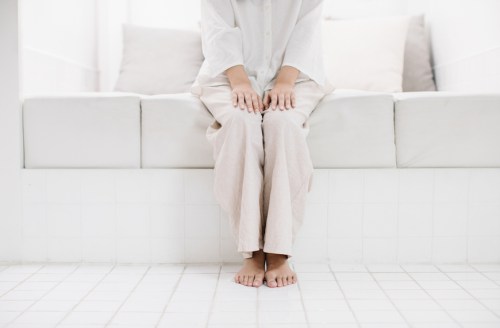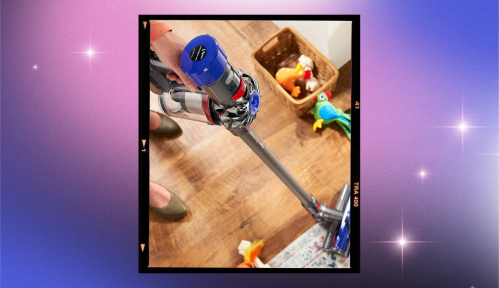Our editors independently select these products. Making a purchase through our links may earn Well+Good a commission
Working from home during COVID-19 has certainly changed things, especially when it comes to our wardrobes. Most of us have traded our office attire for something a little more casual (jeans? bras?! things of the past). This includes a change in footwear. Now that we’re social distancing and limiting the amount of time we spend outside of our homes, we’re passing on shoes all together.
But while being barefoot or padding around in fuzzy socks is incredibly comfortable, is it actually good for you? Are there benefits to wearing shoes, aside from protecting us against the elements? Turns out, there are. Here’s what podiatrists want you to know about being barefoot while working from home, and why it might be time to invest in a solid pair of slippers.
No shoes, no problem. But is being barefoot all the time healthy?
While being barefoot is one of life’s simplest pleasures, going shoe-less for the long haul isn’t actually that healthy for your feet.
Dr. Miguel Cunha, founder of Gotham Footcare, explains that walking barefoot for an extended amount of time puts added stress on our natural gait. When we’re not wearing shoes, the distribution of pressure and weight is altered across our feet. “This imbalance may increase the progression of underlying foot deformities, such as bunions and hammertoes,” he says. It can also lead to other painful conditions associated with walking on flat feet, like tendonitis and shin splints, or translate upward affecting other parts of the body, like our knees and back.
Dr. Cunha says there are some benefits to being barefoot, including added circulation and decreased inflammation. “Walking barefoot may also help improve the strength and flexibility of the muscles and ligaments of the foot, improving the function of the feet and improving posture and balance of the body,” he says. “But I urge you to avoid hard surfaces for long periods of time.”
Want to treat your bare feet? Find a rug or consider standing on a yoga mat. “It’ll have less of an impact if you’re on carpet or if the floor has some kind of give to it, like a cork floor or gel mat,” says Dr. Jacqueline Sutera, DPM, podiatrist at City Podiatry. “But it is good to wear slippers for most of the time.”
Give it to me straight—should I be wearing shoes?
Simply put: yes, you should be—at least for a little bit each day. Shoes do provide ample health benefits, including arch support, protection against bacteria and fungus, and shock absorption for sensitive bones and joints. Needless to say, podiatrists recommend wearing something while working from home to protect your feet. (Might be time to invest in those recovery shoes after all.)
Try a comfy, sturdy slipper that softens the impact from hard surfaces, or a lightweight walking shoe that offers additional arch support. Avoid flip flops or backless sandals since they don’t offer much support and require your feet to work extra hard at keeping them on.
It’s also important to alternate footwear throughout the day and week. “The repetitive stress of walking and wearing the same shoes everyday, all day, can inflame ligaments, tendons, fascia and even cause pain, injury and stress fractures,” says Dr. Sutera. No, you don’t need to break out your six-inch pumps—wearing your slippers in the mornings and evenings but opting for sneakers or walking shoes in the afternoon will do the job just fine.
Kick your feet up and relax a little. This alphabet foot stretch is as easy as reciting your ABCs… literally. Or, treat yourself to some at-home foot reflexology that brings the spa to your living room.
Sign Up for Our Daily Newsletter
Get all the latest in wellness, trends, food, fitness, beauty, and more delivered right to your inbox.
Got it, you've been added to our email list.











